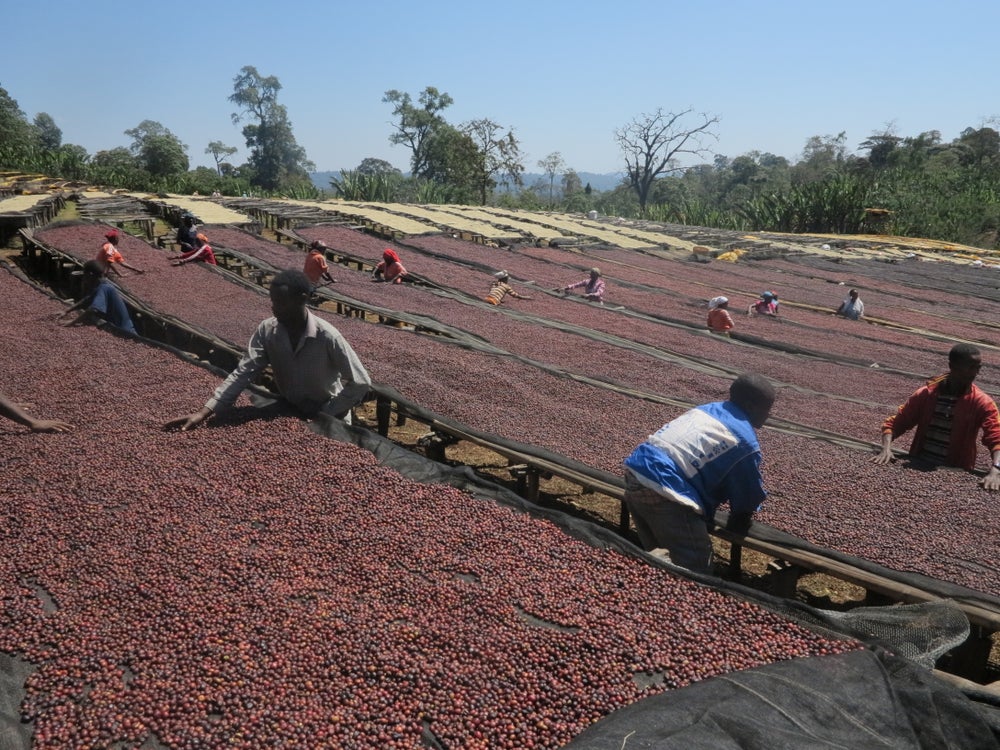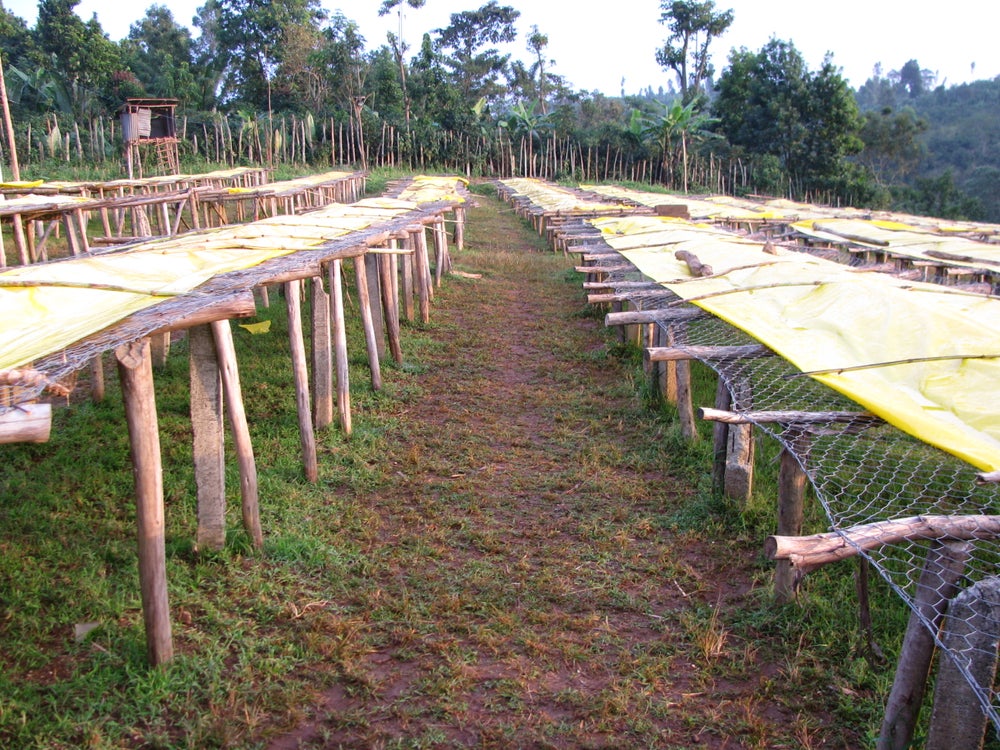About This Coffee
The Guji region lies approximately 300 to 400 km south of Addis Ababa in the Guji Zone of the Oromia Region. The Guji region has a long genealogy. In 2002, Guji itself detached from Yirgacheffe, which had previously been folded in with the Sidamo name. The Guji region, which was created in 2002, takes its name from the Oromo people, a tribe who have farmed coffee on the land for generations.
Coffee from Guji was once lumped in with coffees from all over the Yirgacheff region. Before Yirgacheffe was its own region, those coffees were blended with coffee from a wide geographical area that encompassed much of central-south Ethiopia under the grade “Sidamo”. Despite its long journey, Guji coffees are widely recognized as distinct from both Yirgacheffe and Sidamo coffee thanks to the unique local varieties and microclimates.
Cultivation
Farming methods in Guji remain largely traditional. Guji farmers typically intercrop their coffee plants with other food crops. This method is common among smallholders because it maximizes land use and provides food for their families.
In addition to remaining traditionally intercropped, most farms are also traditional and organic-by-default. Farmers in Guji typically use very few—if any—fertilizers or pesticides. Most farm work is done manually and very few tasks are mechanized, even during processing.
Harvest & Post-Harvest
Due to the size of most plots, coffee is typically handpicked by landowners and their family.
All coffee is selectively hand-harvested before being delivered to a collection center or directly to the washing station. At the washing station, coffee is sorted to remove damaged or underripe cherry. Cherry is then delivered raised beds to dry under shade for 10-14 days until moisture content reaches 12%. During this time, the cherry is regularly turned and hand sorted several times to remove any damaged or discolored cherry. This level of labor and love results in a truly exquisite cup profile.
About Oromia
The Oromos in Ethiopia were consuming coffee centuries before the appearance of the legendary story of Kaldi and his goats.
The Oromos’ coffee-origin story tells of Waqa, the supreme sky God, who punished one of his men with death. It was only after the man’s death that Waqa realized the man was innocent and had been a loyal servant. The next morning, Waqa visited the man’s burial place. Full of grief about killing an innocent and loyal man, tears fell from his eyes onto the grave. Watered by Waqa’s tears, a previously unseen plant emerged from the soil. As you may have guessed, that mysterious, new plant that grew nourished by Waqa's tears was coffee.
Today, Oromia’s fertile red soil is primed for coffee cultivation. The highland slopes nurture countless heirloom varieties that are found nowhere else.
Grades in Ethiopia
Grades depend on visual inspection for defects and on cup quality. There are nine grades. Grade 1 is considered the highest quality coffee. Grade 1 and 2 are considered specialty coffee and grades 3-9 are classified as commercial coffee.
Coffee in Ethiopia
While Ethiopia is famous as coffee’s birthplace, today it remains a specialty coffee industry darling for its incredible variety of flavors. While full traceability has been difficult in recent history, new regulations have made direct purchasing possible. We’re partnering directly with farmers to help them produce top quality specialty lots that are now completely traceable, adding value for farmers and roasters, alike.
The exceptional quality of Ethiopian coffee is due to a combination of factors. The genetic diversity of coffee varieties means that we find a diversity of flavor, even between (or within) farms with similar growing conditions and processing. In addition to varieties, processing methods also contribute to end quality. The final key ingredients for excellent coffee in Ethiopia are the producing traditions that have created the genetic diversity, processing infrastructure and great coffee we enjoy today.
Most producers in Ethiopia are smallholders, and the majority continue to cultivate coffee using traditional methods. As a result, most coffee is grown with no chemical fertilizer or pesticide use. Coffee is almost entirely cultivated, harvested and dried using manual systems.

